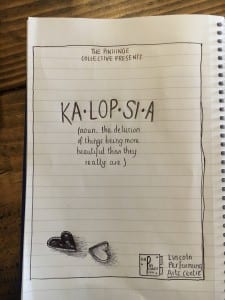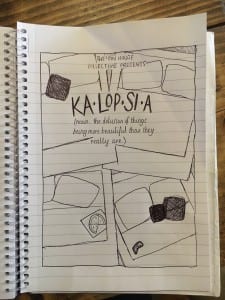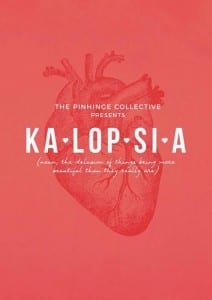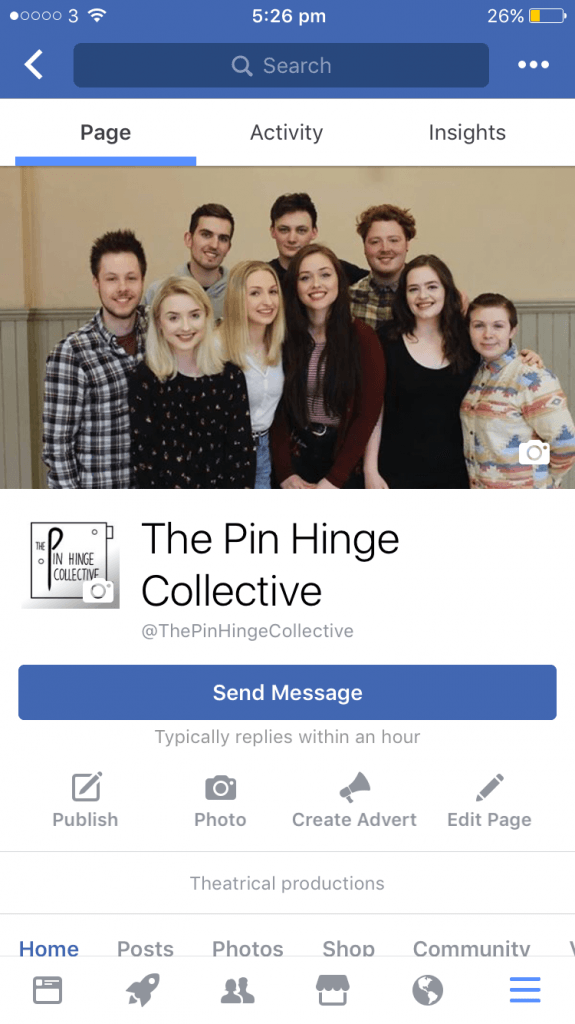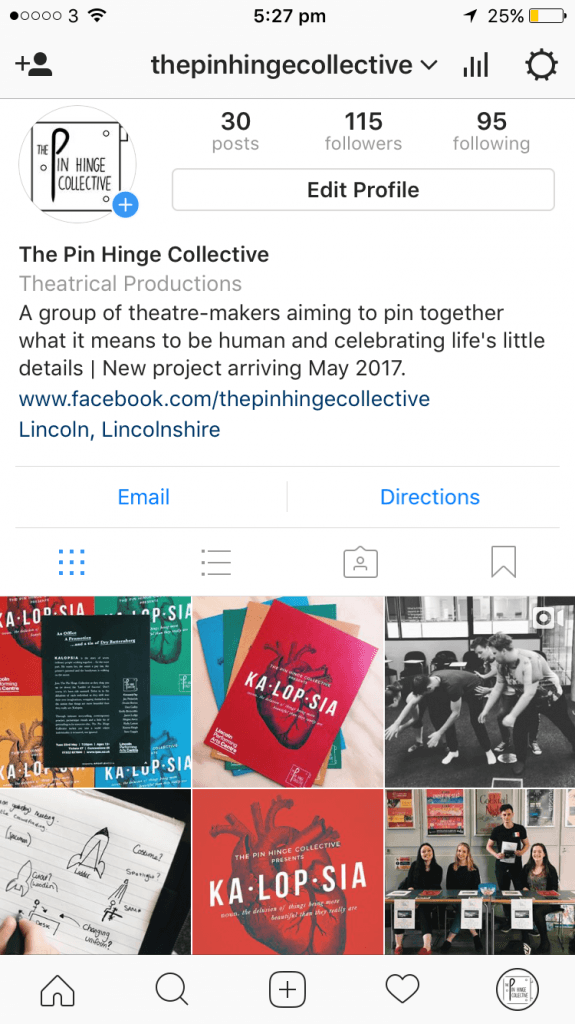Our show finally has a name!
Kalopsia
noun. The delusion of things being more beautiful than they really are.
We agreed that this Greek word applied well to our show as we wanted to show the side of love that isn’t glorified in cinema, the real, gritty, mundane, exciting, side of love. Kalopsia is what happens in film, our show aims to establish and combat that.
Now comes that all-important time to give our show a branding and a public-facing presence, as well as us as a company. We have sourced an in-kind designer to create our print for us, giving him designs we created ourselves for inspiration and allowing him to create the final image for audiences to see.
I mocked up some sketches of potential design ideas as follows:
We had the idea of creating something that people associate with love, yet giving it a twist to show something less commonly seen in films, such as empty pizza boxes, tissues, remote controls, general mess, dirty underwear, etc.
However, the premise of our show changed somewhat during this process – we revisited the name ‘Kalopsia’ and its meaning and decided that rather than focusing exclusively on love as the form of ‘delusion’ we discuss, we wanted to look at the way people view their everyday lives and what delusions we imagine on a day to day basis, i.e. the way we perceive ourselves and the situations we find ourselves in, going back to the idea of reception theory that we discussed in our first rehearsal. Many of these situations within the narrative of our show will also focus on love, therefore we wanted to implement that into our print, yet also show more of an element of the human and humanity: each individual has their own delusions.
After being in talks with our designer regarding this, he sent us some mock-up images of potential designs:
We agreed that the anatomical heart both showed the idea of love, the idea of reality as opposed to the delusion (a cartoon heart – shown in the title) and the idea of humanity. We wanted to have the title of the show resembling a dictionary definition as we knew many people wouldn’t know what Kalopsia meant, and to tell them how to say it through phonetically breaking it up. We also agreed that having the definition under the title would also give people an insight into what the show was about, as well as adding a recognisable yet ‘quirky’ twist. From here, we are to finalise a design and get it completed, as well as creating the final copy and back of the flyers for our shows, and getting it all printed! We have set aside a printing budget of £100 which we will hopefully stick to, but since our designer was in-kind we have some leeway to go over this if needed.
